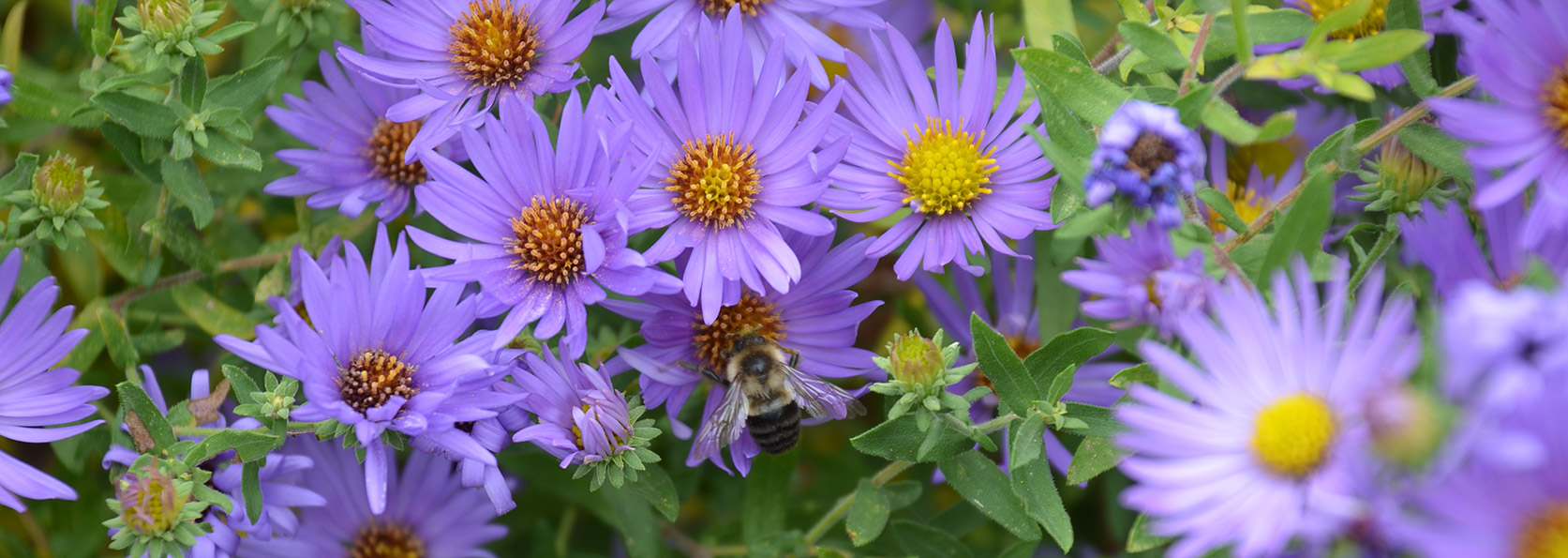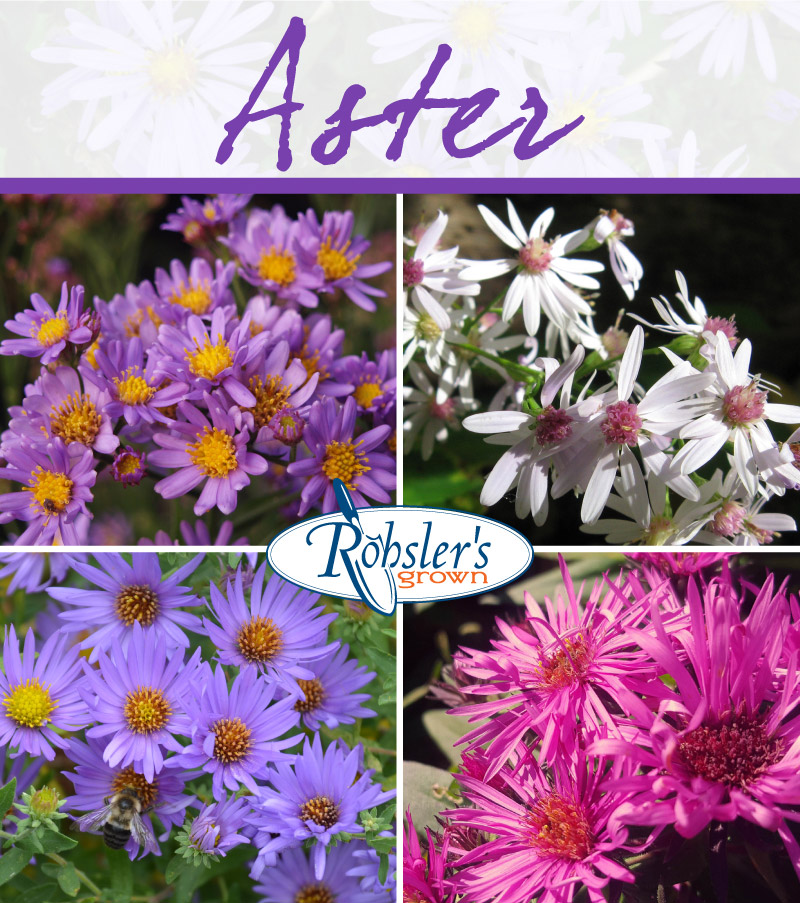Autumnal Superstars

Perennial Of The Week: Aster
Once autumn arrives, it can be difficult to find prolific perennials, but Asters pick up where other plants leave off. Aster (Latin for “star”) refers to the shape of the relatively small flowers, which bloom in profusion, studding the landscape in white, sky blue, lavender, dark pink, and amethyst. We think Asters are also the superstars of the autumn landscape.
Most varieties of Asters love full sun, although one type we grow enjoys the shade. (You’ll read more about that later!) Asters provide nectar for bees and butterflies, and even host the larvae of some butterflies. Add Asters to meadow-style gardens, rain gardens, and naturalized plantings. These are low-maintenance plants that will perform in a wide range of soils, but Asters appreciate a well-drained location. They also make lovely cut flowers on their own or as part of a mixed arrangement.
We are now presenting six varieties of Rohsler’s Grown perennial Asters, including A. oblongifolius ‘Raydon’s Favorite’, A. novae-angliae ‘Purple Dome’, A. novae-angliae ‘Vibrant Dome’, A. tartaricus ‘Jindai’, A. divaricatus, and A. laevis ‘Bluebird’. Look for them in the terra cotta pots that bear the Rohsler’s Grown logo.
Raydon’s Favorite is a fragrant Aster that reaches 2-3’ tall and 1’ wide and prefers full sun but can also be grown in light shade. This variety produces blue blossoms with yellow centers that appear in late summer and continue into autumn. Native to central and eastern portions of the United States, Raydon’s Favorite is a host for the Silvery Checkerspot (a type of butterfly). Deer and rabbits are not at all enamored of this plant.
Also known as New England Aster, Purple Dome produces amethyst flowers with citrine centers on plants that grow 2’ tall and 3’ wide. This variety benefits from “pinching” before mid-July to control the height of the plant and delay flowering.
Small and dynamic, ‘Vibrant Dome’ presents gardeners with deep pink blooms on plants that reach only 20” tall and 30” wide.
Jindai, which takes its name from the Jin-Dai Botanical Garden in Tokyo, Japan, blooms in September and October. Once established, this variety will readily spread via rhizomes. Jindai is an excellent choice for the backs of borders and for naturalized plantings. Be sure to grow this type of Aster in full sun to light shade to eliminate the need for staking or pinching.
As its name implies, Bluebird mirrors the color of the sky from September to frost. Plant this lovely variety in full sun, and watch this Aster reach 4’ tall.
Divaricatus, the White Wood Aster, is a variety that flowers well in the shade. This Aster needs a mere four hours of sunshine a day to reach its full height of 3’. Gardeners appreciate this plant’s clusters of white, open blooms. The yellow centers of these flowers ultimately turn red, harmonizing with the rest of the fall landscape.
Stop by today to learn more about adding Asters to your garden. We’ll see you soon!

